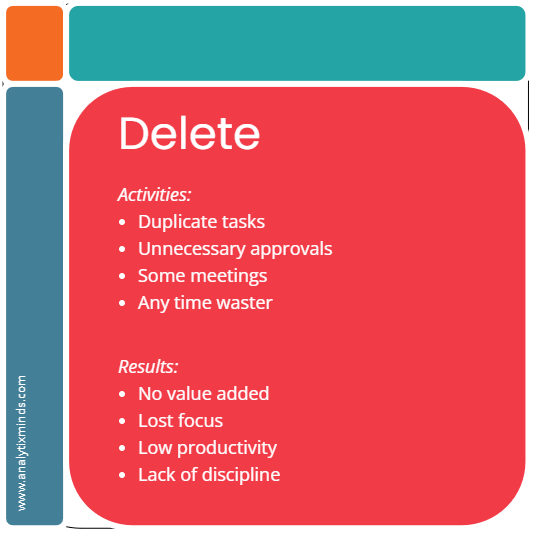Sometimes when a deadline is missed, we think we need a time management system that works. But, then again, how many times have you tried to start your day with a to-do list, only to be thrown off by a flood of urgent requests?
It can feel impossible to get everything done, and sometimes you feel like you’re just spinning your wheels. We all know we should prioritize our tasks, but it’s hard to figure out where to start.
We’ll look at a few Eisenhower matrix examples in this blog post to see how we can use the tool with any digital task management app. Hopefully, it’ll give you another way to develop tactics and strategies to deal with all the stuff thrown your way every day.
- What's the Eisenhower matrix?
- Is it still a good tool to use?
- What you need to know about the Eisenhower matrix
- The difference between urgent and important tasks
- The 4 quadrants of the Eisenhower Matrix
- Using the Eisenhower matrix to make decisions
- Eisenhower matrix examples
- Questions on Eisenhower Matrix
- Final thoughts
What’s the Eisenhower matrix?
The Eisenhower matrix is a time management tool that will help you quickly and efficiently prioritize your tasks based on urgency and importance.
As a result, you’ll be able to get more done in less time without feeling overwhelmed. In addition, it helps you categorize which tasks should be dealt with immediately, later, delegated, or ignored.
It eliminates time-wasters, combats the “mere-urgency” effect, and creates more mental space to achieve your goals. It can also be used in the workplace to manage everyday tasks while maintaining long-term goals. Basically, it’s a way to categorize your task list, considering you’ve got a lot to do but not enough time each day.

Is it still a good tool to use?
Dwight D. Eisenhower, the 34th President of the United States, designed Eisenhower Matrix. He was one of the most iconic figures to serve as president in the White House. As a result, many productivity gurus have studied Eisenhower’s productivity since then.
Stephen Covey expanded on this matrix idea in the book The 7 Habits of Highly Effective People, calling it a simple way to prioritize tasks.
Well, this tool does sound very 1950s! As with everything else, we have made great strides in how we define our priorities and the tools we use to do so.
Also, we have a ton of cutting-edge task management apps at our disposal nowadays. Even in this hyper-productivity-driven culture, I feel the fundamental idea behind this tool still seems relevant today.
We may not want to use a 2 x 2 matrix to write out our tasks on paper. However, we can use this prioritization principle in any digital tool we are currently using to manage our to do lists. Let’s see how we can accomplish that with the help of a few Eisenhower matrix examples.
What you need to know about the Eisenhower matrix
The matrix has four quadrants: urgent and important, important but not urgent, urgent but not important, and not urgent or important. This blog post will explain each quadrant and give examples of how you can use the matrix to manage your time effectively, starting right now. Let’s discuss how to be more productive and how Eisenhower’s strategy can be applied in the workplace and at home.
The difference between urgent and important tasks
What is important is seldom urgent, and what is urgent is seldom important.
How to tell the difference between urgent and important tasks? Urgency and importance are often confused. While urgency is externally driven, usually by deadlines, importance is more of a personal assessment of what is important to you.
Often, what others consider important isn’t necessarily what you feel is important. Therefore, it is crucial to understand the difference between urgency and the importance to manage your time effectively.
Ignore urgent tasks at your own risk!
Ignoring urgent tasks can have serious consequences if left unattended. These are the tasks that require immediate attention and action. Focusing on urgent tasks can make you feel energized.
Taking care of these tasks is crucial, but don’t put out fires for too long. You will lose sight of the bigger picture if you spend too much time putting out fires. It will also lead to a great deal of stress and anxiety.
Important tasks are here to stay!
On the other hand, important tasks are those that contribute to long-term goals and life values. These items require thoughtful planning and action. Focusing on important matters allows you to manage your time, energy, and attention rather than mindlessly spending your resources.
As mentioned before, what’s important is different for everyone and depends on what you value. No one else can tell you what’s important to you. Instead, you need to evaluate your own life and determine what matters most to you.
These tasks may not produce immediate results. So they are often neglected when your time is consumed by urgent tasks. On the other hand, concentrating on important tasks keeps your mind focused.
The 4 quadrants of the Eisenhower Matrix
The first quadrant: urgent and important

This is where you’ll find time-sensitive tasks that require your immediate attention. It’s crucial that you act quickly. In most cases, these items have a visible deadline or a possibility of consequences if action is not taken on time.
You are generally dealing with a situation where a deadline has been set externally, or you have delayed something until a certain time. Often times emergency responses are required.
Quadrant 1 is inevitable.
An example from your professional life would be a project due tomorrow or a serious customer complaint. Personal examples are attending to a sick family member or fixing a leaking sink. All tasks that cannot wait and require your full attention would belong in this quadrant.
The second quadrant: important but not urgent

You need to complete these tasks in the long run, but they don’t require immediate action. In addition, they usually have no deadlines (or end dates), so we can easily push them back to make room for more urgent tasks.
These activities can, however, be very beneficial for your long-term success. Plus, if you don’t attend to these tasks, they could advance to quadrant 1, creating unnecessary stress and burnout.
Quadrant 2 is the key to long term success.
Keeping up with industry research, learning new skills, and building your professional network would be examples from professional life. Activities such as exercising, eating healthy, and spending time with loved ones might fall into this category.
Anything important to your career progressions, overall well-being, and happiness but doesn’t need to be done immediately would go into this quadrant.
The third quadrant: urgent but not important

These tasks might be time-sensitive but don’t really matter in the grand scheme of things. In many cases, they follow expectations from others and don’t get you closer to your long-term goals.
Because of the overemphasis on urgency, you may sometimes take on one of these tasks without considering that it is not important.
Some examples from the professional world would be inconvenient interruptions from coworkers or being called into a companywide conference call that does not pertain to your area of expertise.
Quadrant 3 is your chance to free up time.
Personal examples would be returning a telemarketer’s call or taking advantage of an offer. Basically, anything that you feel like you should do now but isn’t actually that important in the long run would go into this quadrant.
The fourth quadrant: neither urgent nor important

These are tasks that don’t require your immediate attention or aren’t crucial to your long-term goals. You should try to avoid them. The fourth quarter is all about instant gratification, which leaves you feeling unsatisfied in retrospect.
Getting off-topic while researching a project would be a good example. You might binge-watch a Netflix series at home just to get it over with. Anything that won’t help you much when done excessively goes here. They can be put off indefinitely so we can give priority to priorities.
Quadrant 4 wastes your time.
Using the Eisenhower matrix to make decisions
As you now know what each quadrant entails, let’s talk about how to use the Eisenhower decision matrix to manage your time effectively. The first step is to categorize your tasks by importance and urgency. As soon as you’ve done that, you can start working on the tasks based on their priority.

Quadrant 1 – Do
Tasks in the first quadrant are the ones you have to do ASAP. They are time-sensitive. They are important and urgent tasks.
This is where you start. The first quadrant includes tasks that you couldn’t anticipate or tasks you’ve procrastinated in the past. That’s why it’s called the stress quadrant.
These tasks must be completed within a short period.
Quadrant 2 – Schedule
The second quadrant is the to do list that is important but not urgent. These tasks should be scheduled for later since they affect your long-term goals but do not require immediate action. The key to staying on top of these tasks is to make sure they are on your calendar so that you don’t miss them.
According to Covey, this is where most of your personal growth happens. Engaging in these activities for a long time will improve your effectiveness and efficiency. You should plan for these thoroughly and devote as much time as possible.
The Pareto principle is an excellent way to prioritize tasks in quadrant 2. There will always be 20% of things that will reap 80% of the rewards.
Put your energy into the tasks that will have the most significant impact on your career or well-being.
Remember, the tasks in quadrant two can move into the first quadrant if those tasks are left unplanned.

Quadrant 3 – Delegate
The tasks here are time-sensitive like those in quadrant 1, but they’re not super important. Often, these are tasks that prevent you from completing quadrant 1 tasks. Consider delegating these tasks to someone else whenever it’s possible.
Sometimes, delegating tasks may take extra time. There might be training and supervision required. However, ultimately it’ll pay off.
Appointing and training a subordinate to send out a weekly status update email will consume your time now but will be a time-saver for you in the future.

Quadrant 4 – Eliminate
Some of the activities in the fourth quadrant are not absolutely necessary. It is called the escape quadrant. These are the leftover tasks that are neither urgent nor important. Eliminate these entirely.
Try to void being distracted by the unnecessary tasks in this quadrant. You will realize these tasks are mostly responsible for your missed deadlines and dissatisfaction with your quality of work.
Eisenhower matrix examples
This is how an Eisenhower matrix might look for a project manager.

Questions on Eisenhower Matrix
What is the origin of the Eisenhower matrix?

The 34th President of the United States, Dwight D. Eisenhower, served two terms between 1953 and 1961. He was a five-star general in the Army before he became president. During World War II, he served as the Supreme Commander of the Allied Forces in Europe. After the war, he acted as the first Supreme Commander of NATO.
Eisenhower was known for his many accomplishments during his presidency. Two of his most notable achievements were the construction of Interstate Highways and the establishment of NASA.
He had to make many tough decisions about which tasks he should prioritize each day throughout his career. This led him to his well-known productivity strategy, referred to as the Eisenhower Matrix (also known as The Time Management Matrix, The Eisenhower Method, and the Urgent Important Matrix, Eisenhower principle or Eisenhower Box).
As explained in this blog post, it is a simple decision-making tool that helps us prioritize our tasks by urgency and importance.
How to overcome procrastination with the Eisenhower matrix?
If you find yourself putting things off or struggling to get started on the tasks that matter most, the Eisenhower matrix can be a helpful tool. This technique can help you overcome procrastination by assigning correct priorities to your tasks.
Urgent tasks are those that need to be done right away, while important tasks are those that contribute to your long-term goals. Tasks that are both urgent and important should be given priority, while those that are neither urgent nor important can be put off or delegated.
Make a list of all the tasks you need to complete. Decide whether a task is urgent, important, both, or neither. Once you have your list, you will be able to see which tasks you should focus on and which can wait. It is a tool that can help you in your professional development journey.
Final thoughts
It’s easy to create your own Eisenhower matrix template using an Excel sheet or a Word document. If you have a digital to-do list app, categorize and schedule your tasks the Eisenhower way. By using this tool, you will be able to prioritize the most important tasks and complete them on time.
You will make the most of your time and be more productive overall. So next time you feel overwhelmed with everything you have to do, remember the Eisenhower matrix and put it into action! It can really help.
